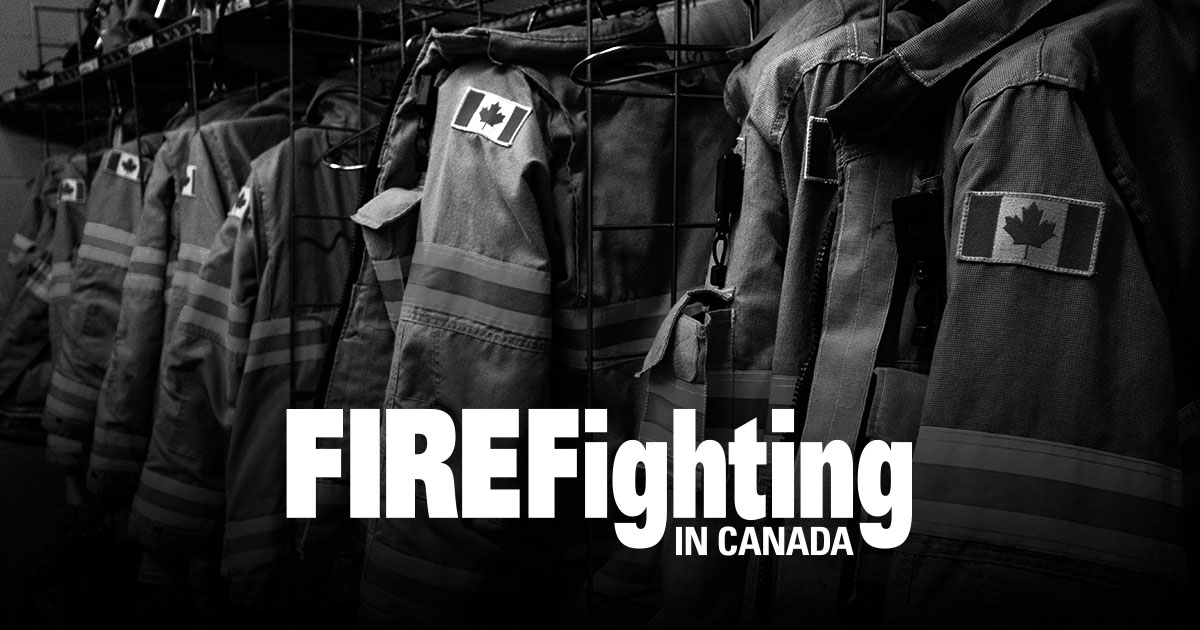
You may have heard of PFAS, or per- and polyfluoroalkyl substances – a large, complex group of synthetic chemicals that have been used in consumer products around the world since the 1950s.
PFAS are found in everyday products; they keep food from sticking to packaging and cookware and make clothes and carpets resistant to stains. PFAS are also found in the moisture barrier in bunker gear to help ensure that critical layer does what it’s supposed to do – prevent water, hazardous materials, and body fluids from reaching firefighters’ skin.
As the U.S.-based National Intitute of Environmental Health Science explains on its website, PFAS molecules have a chain of linked carbon and fluorine atoms. Because the carbon-fluorine bond is one of the strongest, these chemicals do not degrade easily in the environment.
Like so many other substances that manufacturers have used to solve a problem, there are potential health problems associated with PFAS, from immune system issues to some forms of cancer.
More than 9,000 PFAS have been identified. Everyone is exposed to PFAS, and over time, some people may take in more PFAS than they excrete.
One report suggested levels in people have been reduced since legacy PFAS were removed from consumer products in the early 2000s. But new PFAS have been created and exposure to them is difficult to assess. The National Institute of Environmental Health Sciences says more research is needed to understand all sources of exposure, and if and how PFAS may cause health problems.
Which brings us to NFPA 1971, Standard for Protective Ensembles for Structural Fire Fighting and Proximity Fire Fighting. NFPA 1971 is part of the standards consolidation process that will reduce the number of emergency response and responder safety standards to 29 from 90, to prevent duplication and confusion, and streamline the standards development process. NFPA 1971 – along with NFPA 1975 (protective ensembles), NFPA 1981 (SCBA), and NFPA 1982 (PASS) – will become part of the new NFPA 1970, Standard on Protective Ensembles for Structural and Proximity Fire Fighting, Work Apparel and Open-circuit Self Contained Breathing Apparatus (SCBA) for Emergency Services, and Personal Alert Safety Systems (PASS).
As is the case with all NFPA standards, NFPA 1970 is undergoing an extensive public-input process. The second-draft report is due in October and, depending on further input, the new standard will be issued in either January or June 2024.
Historically, NFPA 1971 outlined the testing components for all the parts of firefighter personal protective equipment, including the moisture barrier, but did not indicate what materials were to be used – that was up to the manufactures.
There are five technical committees advising the development of NFPA 1970 (you can find details at www.nfpa.org/1970); the committees comprise manufacturers, fire departments, occupational health and safety proponents, researchers, IAFF representatives, Underwriters Laboratories, and several other subject matter experts. NFPA facilitates the standards development process; staff do not participate.
Recently, some groups wanted the moisture barrier removed. Instead, the proposed new standard addresses PFAS concerns in other ways.
Proposed changes in first draft of NFPA 1970 require that manufactures not use PFAS in new gear. Proposed changes include:
Elimination of the light degradation resistance test on the moisture barrier layer of jackets; this is replaced by a multi-environmental conditioning procedure that will be applied to composite test samples before certain tests.
- Requirements for manufacturers to indicate that gear is PFAS free.
- Requirements for acceptable levels of specific restricted substances and a test method to determine the presence and quantity of specific restricted substances.
- Requirements to test for ease of cleaning.
- Requirements to test for liquid repellency and penetration resistance of persistent contaminants.
- Added requirements to test for leaching of material substances.
There may be more changes as the standard development process continues.
To follow along with the development of NFPA 1970, go to www.nfpa.org/1970 and click on e-mail alerts.
Laura King is the NFPA’s regional director in Canada. Contact her at lking@nfpa.org and follow her on Twitter at @LauraKingNFPA.
Print this page
Advertisement
- Kirkland Lake appoints new fire chief, emergency services director
- SPSA invests in water bomber to help fight wildfires
